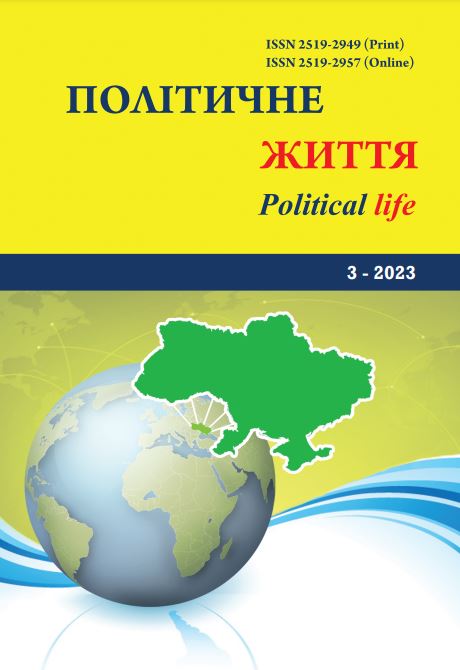Structures of political opportunities: New perspectives on public policy
DOI:
https://doi.org/10.31558/2519-2949.2023.3.3Keywords:
political actors; protests; structures of political opportunities; public policy sphere; formal and informal proceduresAbstract
The article examines the phenomenon of policy effectiveness in terms of the concept of political opportunities. The concept is presented in the form of opportunities that affect the mobilization of the population. The author provides a retrospective of the analysis and modification of the theory of political opportunities in terms of expanding structures. This allows us to put forward a hypothesis about a wide range of properties of the political system, which, through a combination of formal and informal procedures and strategies, can activate new structures of political opportunities. And while in the classical sense the structures themselves are based on the formality of openness/closure of political institutions, activities of political elites and control over the exercise of power, informal procedures have not yet been sufficiently studied. The article concludes that the structures of political opportunities can change as a result of certain political events that are intensified in the public field. This may indicate the level of public policy that is a product of formal and informal procedures of structural pressure of political opportunities. Informal procedures and strategies that are activated within the formal activities of political institutions, the political elite and controlling instruments can influence the change of the political system. This does not deny the openness or closure of the system. It may indicate the structural impact of political opportunities on the transformation of the system itself. Informal procedures can look like both a confrontational element of political opportunity structures and a facilitative (or cooperative) element of structures. And this can indicate not only the form of pressure, but also the form of mobilization of the public movement. Where the classical openness/closedness of political institutions, the activities of political elites and control over the exercise of power are the result of the structural pressure of informal procedures.
References
Caruso L. Theories of the Political Process, Political Opportunities Structure and Local Mobilizations. The Case of Italy (2015). Sociologica, 3: 1-30.
Giugni M. Political Opportunities: From Tilly to Tilly (2009). Swiss Political Science Review. 15(2): 361–68.
Meyer, D. S. (2004). Protest and political opportunities. Annual review of sociology, 125-145.
Schmitt M. Political Opportunity. A New Framework for Democratic Reform (2015). URL: https://www.newamerica.org/political-reform/policy-papers/political-opportunity/
Tilly C. Contention and Democracy in Europe, 1650-2000 (2004). Cambridge: Cambridge University Press.

